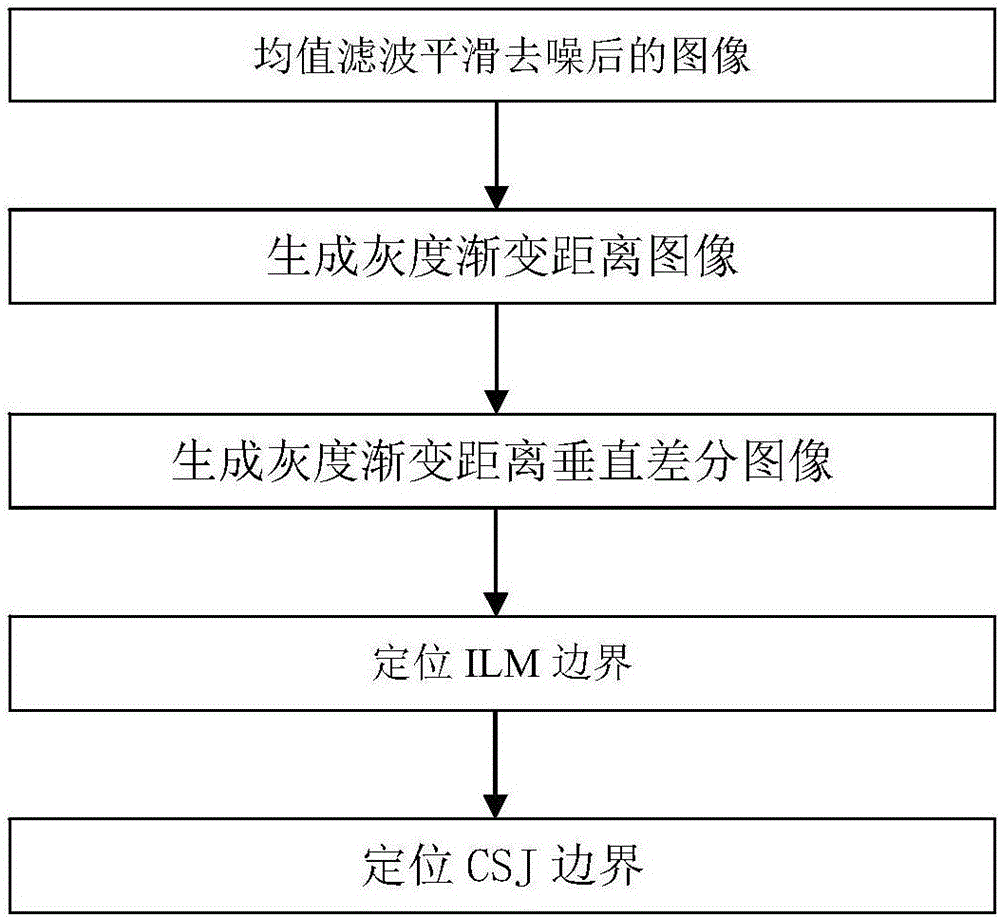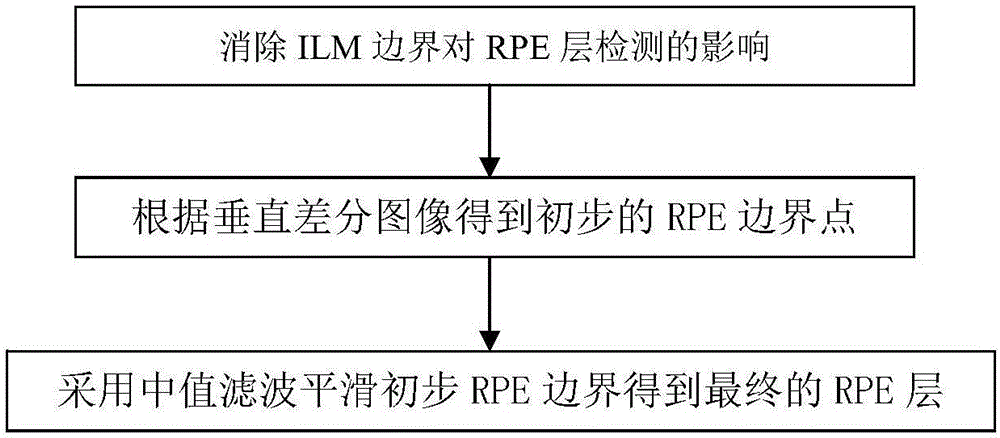SD-OCT retina image CNV segmentation method based on concavity and convexity
A retinal and concavo-convex technology, applied in the field of CNV automatic segmentation of retinal images based on frequency-domain optical coherence tomography, to overcome blurred or even missing lesion boundaries and the effect of overcoming the influence of CNV segmentation
- Summary
- Abstract
- Description
- Claims
- Application Information
AI Technical Summary
Problems solved by technology
Method used
Image
Examples
Embodiment
[0086] The invention of the system uses SD-OCT retinal images as input, and uses image processing means to automatically segment the CNV in the input image.
[0087] The flow of this embodiment is as follows figure 1 As shown, the size of the three-dimensional SD-OCT retinal image collected by the OCT imaging device is 1024×512×128, corresponding to the retinal area of 2mm×6mm×6mm, Figure 7 A frame of original SD-OCT retinal image is given, and several main related tissue structures of the retina are marked in the figure (ILM: inner limiting membrane, RPE: retinal pigment epithelium, BM: Bruch's membrane, CNV: choroidal neogenesis Vascular, CSI: chorioscleral border). Figure 8 is the smoothing result of bilateral filtering, Figure 9 The retinal and choroidal areas estimated based on the reflectance characteristics can be easily obtained by a global threshold because the reflective rates of the retinal and choroidal areas are significantly higher than those of other area...
PUM
 Login to View More
Login to View More Abstract
Description
Claims
Application Information
 Login to View More
Login to View More - R&D
- Intellectual Property
- Life Sciences
- Materials
- Tech Scout
- Unparalleled Data Quality
- Higher Quality Content
- 60% Fewer Hallucinations
Browse by: Latest US Patents, China's latest patents, Technical Efficacy Thesaurus, Application Domain, Technology Topic, Popular Technical Reports.
© 2025 PatSnap. All rights reserved.Legal|Privacy policy|Modern Slavery Act Transparency Statement|Sitemap|About US| Contact US: help@patsnap.com



